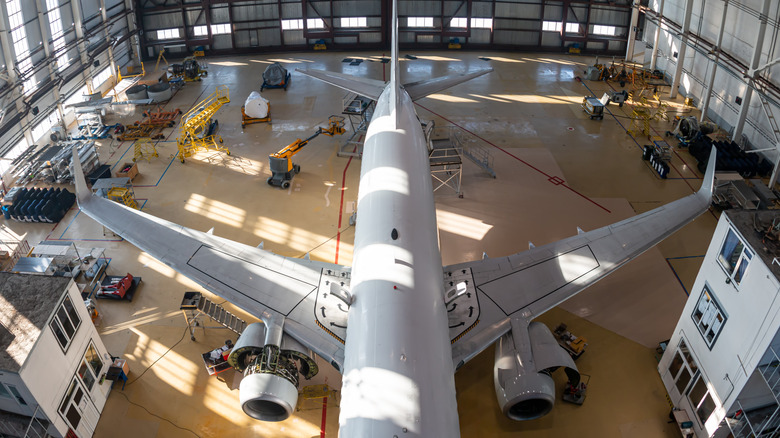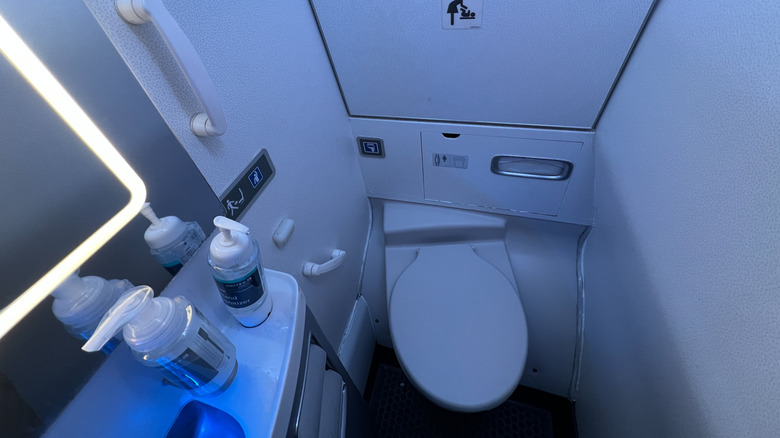Despite having to fly for work frequently, I absolutely refuse to use airplane toilets unless I’m going to Europe in which case it simply can’t be helped. These crammed monotone grey torture chambers are the most humiliating way to move your bowels, and make even the relief of an empty bladder feel ominous. In an effort to cram two more rows in a 747 the airplane bathroom has gotten smaller with each successive redesign. It’s no wonder that some passengers are using these toilets as trash cans, because the actual trash can has become no larger than a mail slot, and it’s seemingly always stuffed to the brim with snot tissues or some stranger’s gross detritus. And why is it constantly wet in there?
But where else are you going to put your kid’s dirty diapers, or a bullet that accidentally hitched a ride through the rigorous security standards of the Transportation Security Administration, or an unopened 5-hour energy bottle? OK, some of these make more sense than others. Brent Wells, president of Iliff Aircraft ATA 38, a company that repairs broken and clogged airplane waste systems, recently spoke to the Washington Post about some of the weirdest stuff his techs have found in aircraft lavs. The full list is absolutely delightful to peruse and imagine scenarios for why and how those things ended up in there.
It’s down right unsanitary
It’s pretty easy to imagine what type of accident might cause a passenger to attempt to dispose of a blanket or their underwear in an airplane bathroom. A different kind of accident results in watches, jewelry, cell phones and kids’ toys being flushed down the chute. In either case, you probably should refrain from putting stuff in the toilet that doesn’t belong there. Airplane toilets are even more susceptible to clogging than your home plumbing.
A clogged airline lavatory or two might not seem like a big deal to you, but when there are a couple hundred unruly passengers onboard for several hours at a time horking down airport Starbucks and Biscoff cookies, the bathrooms suddenly become quite important. Airlines will often divert an otherwise totally airworthy craft in the case of a severely clogged toilet.
“It’s just a gross situation and that’s why airlines do that,” aviation history professor Dan Bubb told WaPo. “They don’t want to make people sick. It’s unsanitary.”
It takes more than a plunger
Your toilet in your bathroom at home makes use of a gallon or more of water to flush. If even 20% of the people on a 500-seat flight used the lav and needed a gallon or so of water to flush, the plane would have to carry an extra thousand pounds of water, and planes are very particular about their weight and how it’s loaded. Instead airplane toilets use a vacuum system to move waste from the toilet to the plane’s holding tank. A small 2-inch diameter tube is all the plane has to work with, and it’s easy to see how even something small can cause a serious backup.
If I clog my toilet at home, that’s my business and I deal with it using a typical rubber plunger. If an airline toilet is clogged, however, it could require one of Mr. Wells’ workers to get in there to remove the toilet, disassemble the pressure lines, and extract the clog. It means downtime for the airline, potentially diverting an aircraft full of people, and thousands of dollars worth of repairs.
The moral of the story; If it isn’t number one, number two, or toilet paper, don’t put it in the airplane potty you degenerates. But maybe, just maybe, airplane toilets should also be built better.




